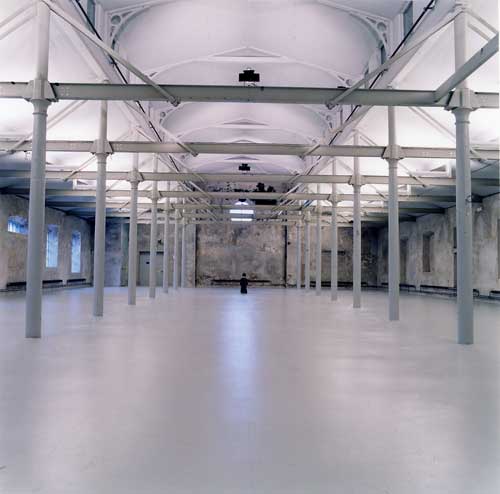A Visit to Färgfabriken: Notes on Sweden’s Approach to Art and Exhibitions, by Eduardo Navas
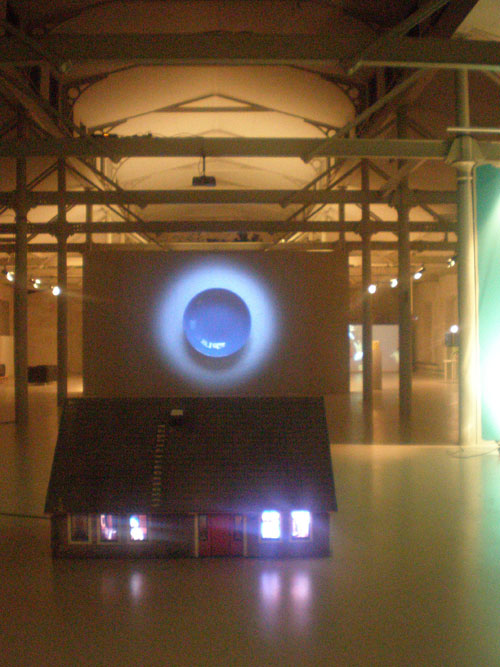
Description by Färgfabriken
Birthday Party, 2000
Birthday Party (1:10) is a reconstruction of the party of the artist?s mother?s 65th birthday on March 16, 2000. Ten cameras documented the party, and the films were later screened in the windows of a wooden model of the suburban villa.
During the months of October and November, I am working for four weeks as a Correspondent in Residence for the Swedish Traveling Exhibitions (STE), a non-profit organization based in Visby, a small town located in the island of Gotland. The Institution produces exhibits of all types that travel throughout Sweden, and is particularly interested in exploring the possibilities of the exhibition space as a mobile unit in all possible forms.
As part of my residency, I am scheduled to visit a number of institutions mainly in the cities of Stockholm and Goteborg. My first stop was Stockholm, where on Monday, October 20, I visited Färgfabriken, an artspace located in a former factory sector. Project Manager Sofia Palmgren generously showed me around the former paint factory, which in 1996 was turned into an artspace that is focused in art as process. The institution has a very open mission statement, but upon examining their archives, it becomes evident that their interest is to deliver conceptually engaging art installations that are quite sensitive to all the senses.
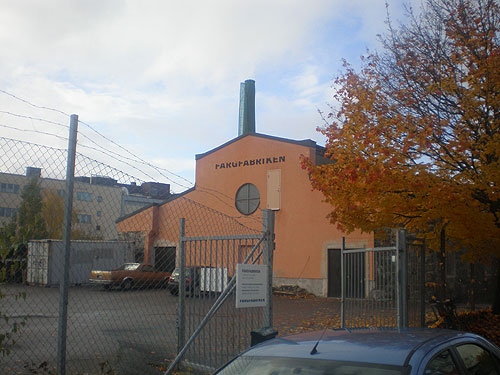
Front facade of Färgfabriken, a former paint factory turned into an art space in 1996.
At the time of my visit, Färgfabriken featured the work of Ola Pehrson, a rising star from Sweden who unfortunately did not survive a major car accident in 2006. His first retrospective at Färgfabriken, taking place from September 2 to November 11, 2009, serves as hard evidence of the productive future that lied ahead of Perhson.
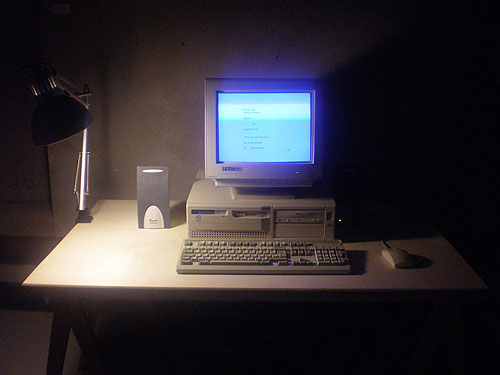
Description by Färgfabriken
Autopoet, 1995-1998
Autopoet is a poetry-generating machine. Its vocabulary encompasses 15,000 words taken from the works of ten celebrated 20th century Swedish poets. The words are incorporated into a thousand combinable grammatical “tracks” that are made up of codes and grouped into grammatical sequences as per the original versions. The frequency of the words in the database corresponds to their frequency in the selection. The computer programme randomly generates short text fragments out of this database and thus produces poetry on its own.
Even though the architecture of the former factory was played down to do justice to the work of Pehrson, I could not help but notice how the building in itself is quite a unique space. I will comment further on the architecture after I share some notes on some of the works I enjoyed during my guided tour.
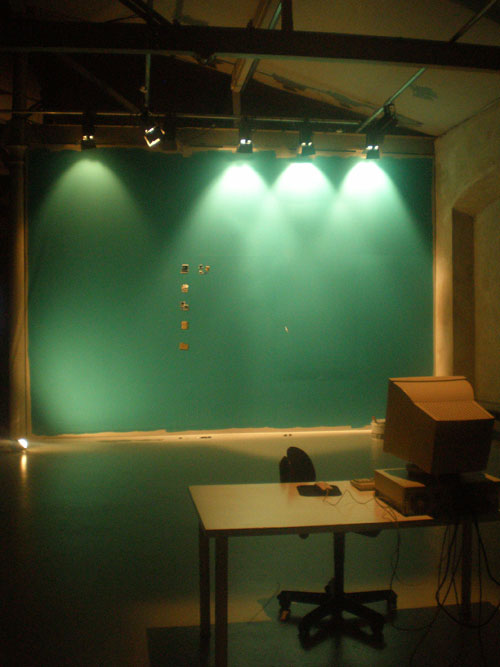
Description by Färgfabriken
Desktop, 1999
Desktop is a 1:10 scale model of the Windows 95 interface. The two parts of the installation are facing each other. Polystyrene sculptures of desktop icons are suspended on fishing lines in front of a monochrome “Windows” painted wall. On the opposite side there is a camera filming the arrangement and screening it in real time on a computer monitor placed on an office desk.
A recurring theme in contemporary art is how emerging technology can become part of established studio practice. Pehrson’s work, interestingly enough, explored this issue before new media art practice had reached a moment in which this preoccupation would be expressly considered part of its own legitimation process.
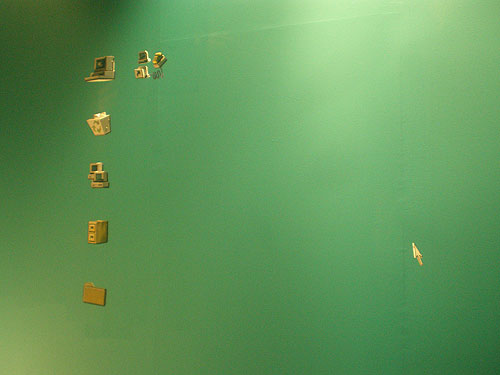
Desktop, 1999 is a prime example of how the influence of new media can be approached with a sensibility in the tradition of art installation. Pehrson’s work foresees many of the issues that the computer would introduce in culture as it became a ubiquitous tool in all aspects of daily and professional life. Desktop deliberately contradicts the disembodiment process that informational aesthetics would make default in global communication. In this installation the visitor approaches the icons and cursor which hang a few inches from a blue/green wall. The diorama is an obvious reference to Microsoft’s desktop.
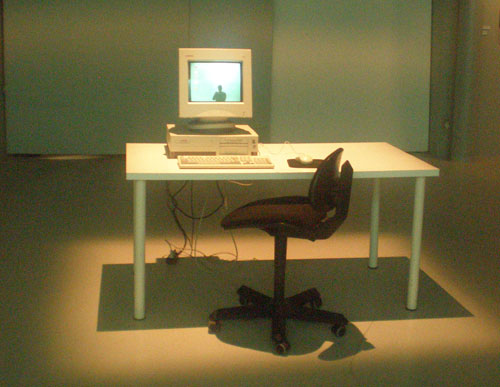
As the viewer approaches the icons, the three-dimensionality of the flat forms becomes evident, and once the viewer turns around, she can view herself on the desktop screen, set up right across the diorama. At this moment the process of disembodiment is evident as the viewer becomes part of the desktop, which normally would be understood as a visual simulation of data. The viewer has to reconsider not only what is a computer desktop, but also how the human body relates to the interface.
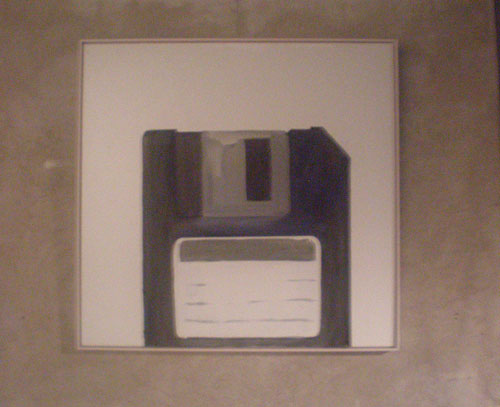
Diskette, 1999, Oil on Canvas
This interest in technology is extended in Diskette, which is a loose-stroke painting of a computer floppy-disk. In 2009, inevitably, both of these works begin to appear nostalgic, even if the artist did not have this in mind. Yet, they demonstrate an awareness of how technology would redefine not only art practice, but also culture at large by treating devices playfully that were often inhibiting to the average person at the time that they were produced (from the early eighties to mid-nineties). These works do the opposite that technology did at the time, which is to present unfamiliar material in very familiar terms; that is, as an art installation and conventional painting.
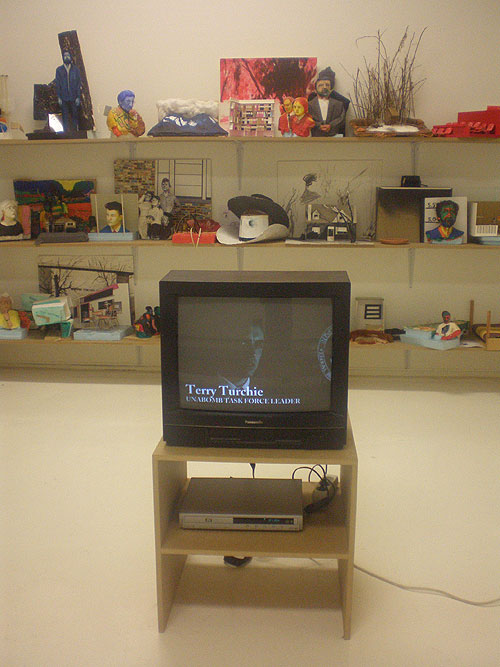
Description by Färgfabriken
Hunt for the Unabomber, 2005
Hunt for the Unabomber is a reconstruction of a Discovery Channel documentary about the American terrorist Theodore John Kaczynski – code-named “The Unabomber” by the FBI – a former professor of mathematics, who, from 1978 to 1995, carried out a bombing campaign against people who, in one way or another, were connected to technology.
Pehrson’s most successful work is likely the installation, Hunt for the Unabomber. Here, the artist recreated with simple props, and surprising accuracy a documentary of Ted Kaczynski. The final video is presented on a monitor, along with all the props used. The displacement of the body can be sensed in this piece as well, as the viewer slowly realizes that the only persons in the documentary are the FBI agents; Kaczynski is represented through props and elaborate sketches. This installation can be read as an overt commentary on the mythical aspects of documentaries, a genre often respected for its factual propositions.
The main exhibition space is darkened to present properly Pehlson’s work, and I wondered if there was any work that could make use of the gallery space in its most raw form: as an empty space showing all the wear and tear of the early years. I found my answer in the archives.
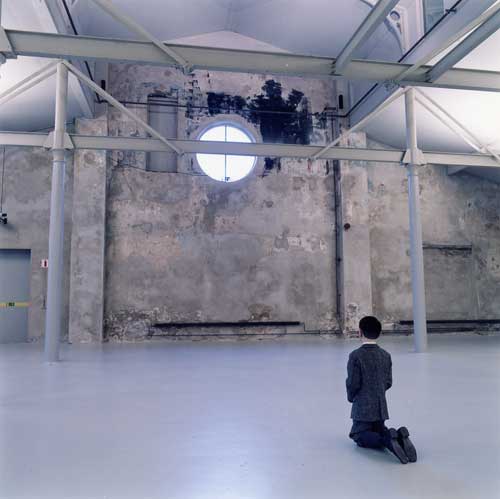
Images source: Färgfabriken
Maurizio Cattelan, Him, 2001
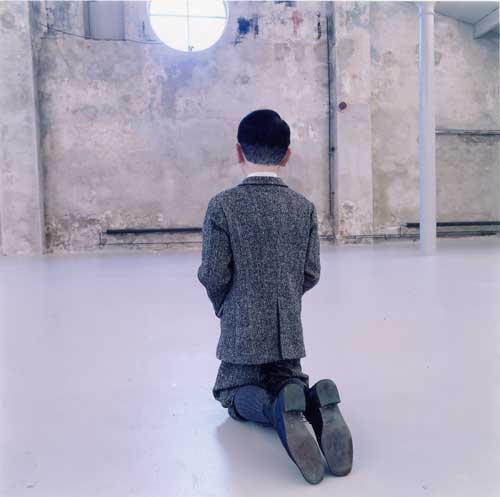
Maurizio Cattelan succeeded in over-coming the rawness of the factory. Him, is likely to be the most compelling piece shown at Färgfabriken. The work was on display for the very first time between February 2 and April 8, 2001.
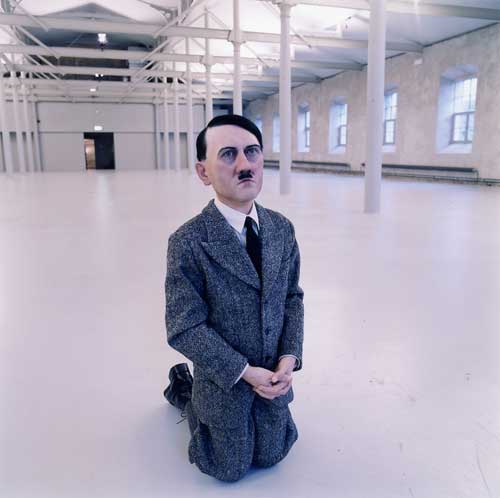
Him not only becomes a commentary on the viewers’ relation to the art object, but also on the object’s relation to the gallery space. The small Hitler figurine is a disconcerting sculpture that startles the viewer simply because its humble relation to the empty gallery is an allegorical play on religion, fascism, and the power of architecture.
